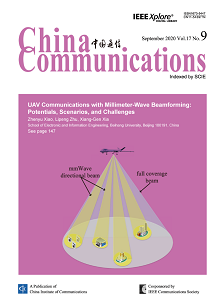FEATURE TOPIC: 6G MOBILE NETWORKS: EMERGING TECHNOLOGIES AND APPLICATIONS
Guangyi Liu, Yuhong Huang, Na Li, Jing Dong, Jing Jin, Qixing Wang, Nan Li
2020, 17(9): 92-104.
With the 5th Generation (5G) Mobile network being rolled out gradually in 2019, the research for the next generation mobile network has been started and targeted for 2030. To pave the way for the development of the 6th Generation (6G) mobile network, the vision and requirements should be identified first for the potential key technology identification and comprehensive system design. This article first identifies the vision of the society development towards 2030 and the new application scenarios for mobile communication, and then the key performance requirements are derived from the service and application perspective. Taken into account the convergence of information technology, communication technology and big data technology, a logical mobile network architecture is proposed to resolve the lessons from 5G network design. To compromise among the cost, capability and flexibility of the network, the features of the 6G mobile network are proposed based on the latest progress and applications of the relevant fields, namely, on-demand fulfillment, lite network, soft network, native AI and native security. Ultimately, the intent of this article is to serve as a basis for stimulating more promising research on 6G.
